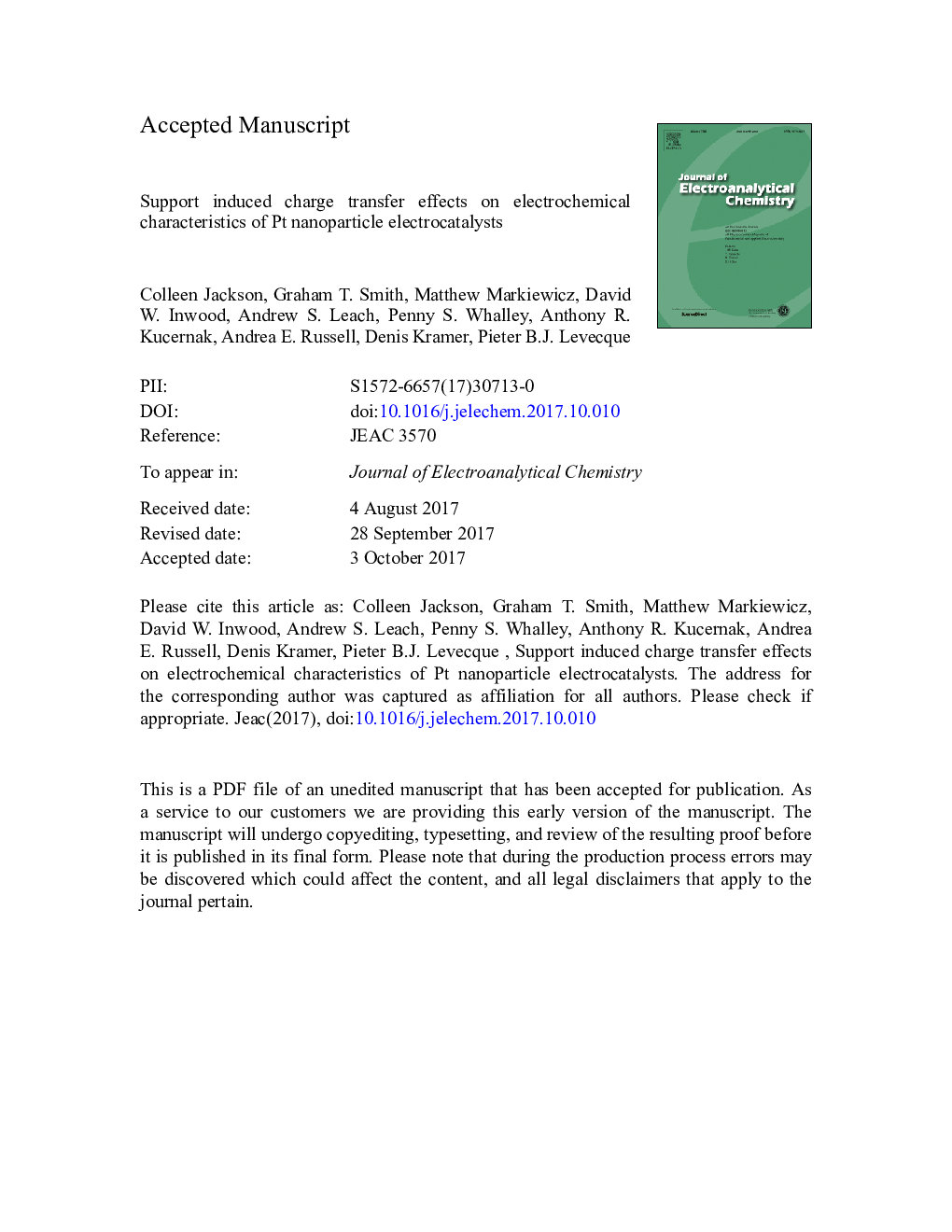| Article ID | Journal | Published Year | Pages | File Type |
|---|---|---|---|---|
| 6661728 | Journal of Electroanalytical Chemistry | 2018 | 20 Pages |
Abstract
The electrokinetic properties of Pt nanoparticles supported on Carbon (Pt/C) and Boron Carbide-Graphite composite (Pt/BC) are compared over a wide potential range. The influence of the support on the electronic state of Pt was investigated via in-situ X-ray Absorption Spectroscopy. Pt d-band filling, determined from XANES white line analysis, was lower and nearly constant between 0.4 and 0.95 V vs. RHE for Pt/BC, indicating more positively charged particles in the double layer region and a delay in the onset of oxide formation by about 0.2 V compared to the Pt/C catalyst, which showed a marked increase in d-band vacancies above 0.8 V vs. RHE. Moreover, Îμ analysis of the XANES data indicated a lack of sub-surface oxygen for the Pt/BC catalyst compared to the Pt/C catalyst above 0.9 V vs. RHE. Additional anion adsorption on the Pt/BC in the double layer region, detected by CO displacement, was also confirmed by XANES analysis of the d-band occupancy. The H2 oxidation activities of electrodes with low catalyst loadings were assessed under high mass transport conditions using the floating electrode methodology. The metal-support interaction between the Pt and BC support improved the maximum hydrogen oxidation current density by 1.4 times when compared to Pt/C.
Keywords
Related Topics
Physical Sciences and Engineering
Chemical Engineering
Chemical Engineering (General)
Authors
Colleen Jackson, Graham T. Smith, Matthew Markiewicz, David W. Inwood, Andrew S. Leach, Penny S. Whalley, Anthony R. Kucernak, Andrea E. Russell, Denis Kramer, Pieter B.J. Levecque,
